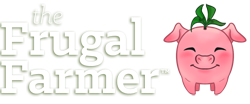With the cost of everything rising dramatically since COVID, food costs are definitely no different. In fact, the average cost of groceries has risen exponentially since 2020. While the average increase annually over the past 20 years has been 2%, in the past year alone it has been over 11%. That’s ridiculous! So, to help counteract that huge rate of inflation a little bit, a lot of people have started to reduce food costs by foraging. And we are no different.
reduce food costs by foraging best practices
If you do decide you want to embark upon a foraging trial to help reduce food costs, there are some best practices to follow. These practices help keep you and your family safe, as well as help replenish the environment you are foraging in.
- Know what you are picking before you pick anything
- Don’t take more than you plan to consume before the food can go bad
- Only collect foods when they are in abundance
- Leave plenty of food behind for the animals and to regenerate
- Don’t pick rare species, as it may be illegal
- Get permission to forage on someone’s land before doing so
- Don’t pick anything near highways and roads, as they are typically fairly contaminated
What to forage
Choosing what to forage will be very specific to you. What you and your family like, will have a huge impact on what you choose to forage. Another big factor will be what is available near where you live, or within driving distance. And the last big factor will be what season it is. Certain plants, berries, fruits, nuts, mushrooms, etc. can only be found during certain times of year.
For us, personally, our big focus tends to be in the fungi family. We have a lot of edible species that grow wild around us, so we take full advantage. Overall, here are some of our favorite things to go out and forage for:
- Chicken of the Woods (Mushroom)
- Hen of the Woods (Mushroom)
- Lion’s Mane (Mushroom)
- Chanterelle (Mushroom)
- Shaggy Stalked Bolete
- Wild Dill
- Wild Green Onions
- Burdock
- Purslane
- Dandelion
- Blackberries
- Blueberries
- Raspberries
For us, we are lucky in that we live in the piedmont area of North Carolina that gets a lot of rain and has tons of foliage regularly. If you aren’t sure what might be available near you, there are plenty of foraging groups you can get involved with. Most of these are on platforms such as Facebook, Instagram or Twitter. But, one of the best sources I have found to take with me when I forage has been the Wild Remedies book. It not only gives me a wide variety of plant life to look for, but also scientific identifiers to make it easier to not choose the wrong species on accident. And, as a bonus, it gives me some delicious ways to cook what we’ve foraged.
where to forage
Once you’ve nailed down what you plan to forage for, then you just need to figure out where the best spots are. A lot of the crowdsourcing groups can help with this. We are a part of a couple of them that post where they find some of their foraging bounty and when. If you aren’t sure where to start though, there is a great website, Falling Fruit, that gives a ton of in depth information about specific species, when and where to find them. It can be a bit difficult to weed through though, so be patient. Here is another good source of information to find some more sources that may be more local to you, as well.
We typically forage at some local parks and hiking trails that aren’t too far away, as well as our own yard since we follow organic practices. One thing I want to caution you about is choosing what you are foraging wisely. A lot of less wild spots will spray herbicides and pesticides regularly, which you don’t want to ingest. And if you are foraging near a roadside, you are bound to get highly contaminated food instead of clean sources. So, the further you can get away from the beaten path, the better.
And when you are foraging, make sure you leave an ample amount of your “prey” behind so that it can feed the wild habitat it thrives in, as well as regenerate. This is especially true of the fungi and algaes. If you take all of them, instead of leaving some, you are diminishing the crop down to nothing and directly impacting the environment negatively.
reduce your food costs by foraging summary
Ultimately, foraging is a great way to reduce your food costs and increase your diet’s biodiversity. Plus, you’ll be getting outside to get some exercise and fresh air, which is also great for your health. We’ve been able to reduce how much fresh fruit, mushrooms and herbs we’ve had to buy from the store vastly. And by doing so, we’ve cut our food costs, because these things can get pretty pricey. Plus, they taste so much better when they are freshly picked. So it’s a win-win all the way around.
Have you ever tried foraging to help reduce your food costs? If so, what has been the best thing you’ve found so far?








